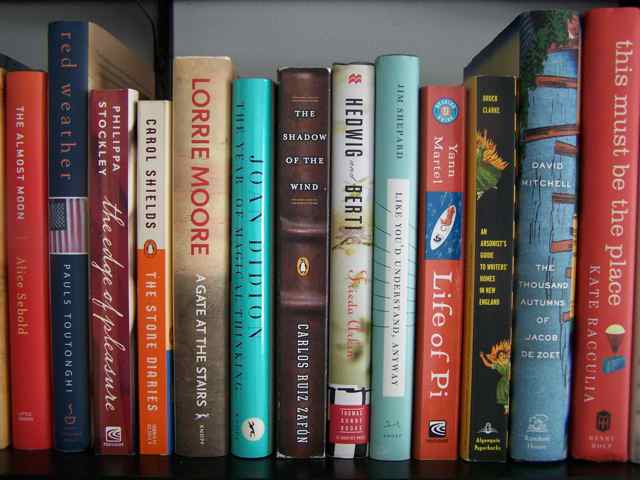 Daily crises, confrontations, misunderstandings, adolescent hormonal outbreaks, sexual tension, attempted suicide, a nervous breakdown, a dramatic brush with death, and no cell phone reception except in a tiny corner of an upstairs bedroom don’t make for a relaxing family holiday, but make The Red House by Mark Haddon, where much of what happens is happening inside someone’s head, an intriguing novel of family and identity.
Daily crises, confrontations, misunderstandings, adolescent hormonal outbreaks, sexual tension, attempted suicide, a nervous breakdown, a dramatic brush with death, and no cell phone reception except in a tiny corner of an upstairs bedroom don’t make for a relaxing family holiday, but make The Red House by Mark Haddon, where much of what happens is happening inside someone’s head, an intriguing novel of family and identity.
Angela’s brother Richard phones Angela out of the blue after their mother’s funeral, to invite her, her under-employed husband of twenty years, Dominic, and their three kids (athletic Alex, age 17; born-again Daisy, 16; and dreamy Benjy, 8) – to spend a week’s holiday with him and his new wife, Louisa, and stepdaughter Melissa (age 16) in a rented house in the hilly countryside of Herefordshire on the Welsh border. Although resentful of Richard because of the years she spent dealing with their mother’s long, alcoholic decline while her financially successful younger brother paid the bills and kept his distance, Angela accepts his invitation – unable to take her family on any vacation at all otherwise, much less to a more exotic locale, as she pointedly reminds Dominic, the failed family breadwinner. Five weeks from the surprising phone call, they’ve all met up at the shabby but comfortable rental house and started getting to know each other, somewhat stiffly and awkwardly.*
Sentence fragments. Many fragments. Passing thoughts, random images, partial memories, inchoate yearnings. (This was how I thought of starting out the review, but I was afraid it would sound negative, and I want readers of literary fiction to read The Red House, even though it is more like A Spot of Bother,** the author’s second novel, than his more popular first, The Curious Incident of the Dog in the Night-Time.)
It takes a while to get used to the poetic style of the author’s writing. (Sentence fragments. Many fragments.) You don’t always know what is being thought or who is doing the thinking at first, but this is the way the author gets the reader into the characters’ heads. People don’t think in fully-formed, coherent paragraphs, or even in full sentences, sometimes not even verbally.
Also confusing at first is the way the author uses italics instead of quotation marks to signify that a character is talking, not thinking – the opposite of the usual use of italics. I don’t know why the author decided to do this. Maybe just because most of the book would have been italicized if it had been done the usual way.
Even those who aren’t relative strangers to each other learn something about their siblings, spouses, parents, children, or themselves during the week away – some good, some bad – and have had to revise their thoughts about themselves or someone else during their time outside of usual life. Nothing is charming or particularly heartwarming (no group-hugs), but the brief period of togetherness makes their individual lives of quiet desperation a little less lonely and desperate.
*understatement of the year
**understatement of THAT year
Read a Telegraph article about author Mark Haddon here, which includes a short excerpt from near the beginning of The Red House.
Disclosure: I received an e-galley of this book from Doubleday through NetGalley.
The Red House
Haddon, Mark
Doubleday
June 12, 2012
978-0-385-53577-9
272 p., $25.95, hc
